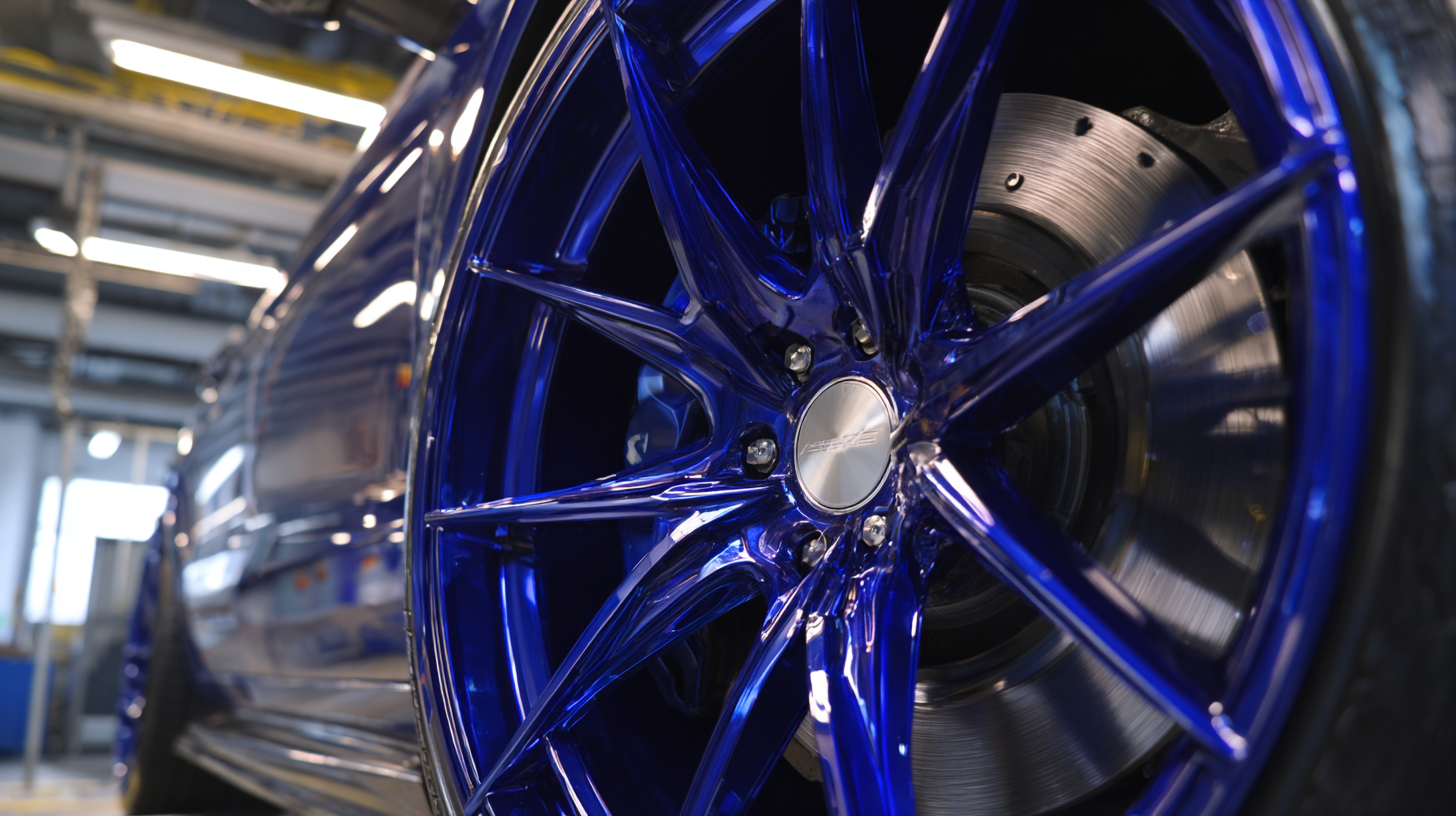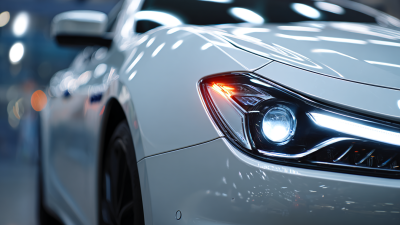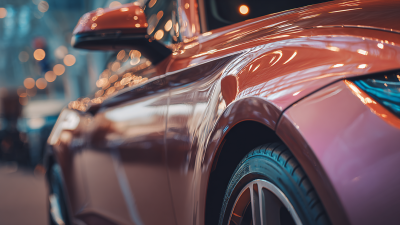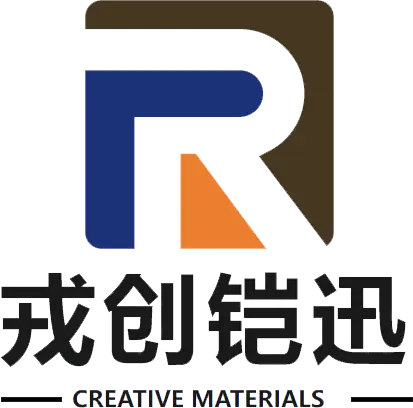The durability and protection of steel structures have become paramount in today's industrial landscape, where harsh environments and rigorous usage can lead to material degradation. One innovative solution that has gained significant attention is Ceramic Coating on Steel. This advanced coating technology offers a range of benefits that enhance the longevity and performance of steel products. By forming a robust barrier against corrosion, chemical exposure, and physical wear, ceramic coatings not only extend the life of steel components but also reduce maintenance costs over time.

In recent years, the application of Ceramic Coating on Steel has been increasingly recognized in various industries, including automotive, aerospace, and construction. The improved resistance to heat and abrasion makes this coating especially appealing for high-stress applications. Furthermore, the aesthetic versatility of ceramic coatings allows for customization in color and finish, catering to both functional and visual preferences. As businesses seek to invest in materials that provide both performance and value, understanding the advantages of Ceramic Coating on Steel is crucial for informed decision-making in material selection and maintenance strategies.
Ceramic coating has emerged as a game-changing solution for enhancing the durability and protection of steel surfaces, offering remarkable improvements in lifespan and performance. According to a comprehensive study by the American Society for Testing and Materials (ASTM), steel components treated with advanced ceramic coatings can exhibit durability increases of up to 50%. This significant enhancement is attributed to the coating's exceptional resistance to wear, corrosion, and high temperatures, making it an ideal choice for various industrial applications.
Additionally, ceramic coatings form a protective barrier that minimizes the impact of environmental factors such as humidity and chemicals, which can lead to premature degradation of untreated steel. A report from the International Journal of Surface Engineering highlights that steel structures coated with ceramics not only perform better under stress but also require less maintenance over time, resulting in extended operational periods and reduced overall lifecycle costs. By investing in ceramic coating technology, industries can achieve superior steel performance while safeguarding their assets against the rigors of everyday use.
Ceramic coating has emerged as a superior alternative to traditional steel finishes, offering several advantages that enhance durability and protection. Traditional finishes, such as paint or powder coating, provide a basic layer of protection against corrosion and wear, but they often fall short in long-term performance. They can chip, fade, or wear off over time, leading to exposure of the underlying steel. In contrast, ceramic coatings bond at a molecular level, creating a robust layer that resists scratches, chemicals, and high temperatures. This results in a significantly longer lifespan and reduced maintenance needs.

Moreover, the application of ceramic coatings requires less frequent reapplication compared to traditional finishes. While paint might need to be restored every few years, a well-applied ceramic coat can last a decade or more, providing lasting protection against the elements. Additionally, ceramic coatings are hydrophobic, meaning they repel water and resist dirt accumulation, keeping steel surfaces cleaner and more visually appealing. This combination of enhanced durability and low-maintenance characteristics makes ceramic coatings particularly attractive for industries relying on steel components exposed to harsh conditions.
The long-term benefits of ceramic coating maintenance are becoming increasingly evident as vehicle owners prioritize enhanced protection and overall durability. Ceramic coatings offer a robust shield against environmental contaminants, UV rays, and minor abrasions, significantly extending the life of a vehicle's exterior. This technology not only preserves the aesthetic appeal of the vehicle but also reduces the frequency and costs associated with repainting and detailing.
Moreover, many automotive care specialists are witnessing a surge in demand for ceramic coating services, as more vehicle owners recognize the financial advantages of investing in such protective measures. Regular maintenance of ceramic coatings can lead to considerable savings over time, eliminating the need for expensive repairs and keeping the vehicle looking new for years. The longevity of ceramic coatings ultimately translates into lower overall maintenance expenses, making them a wise choice for those looking to protect their investment efficiently.
Ceramic coating has emerged as a revolutionary solution for enhancing the durability of steel surfaces, particularly in combating corrosion. One of the standout features of ceramic coatings is their ability to significantly reduce oxidation rates, with studies suggesting a remarkable decrease of up to 90%. This drastic reduction in oxidation not only prolongs the life of steel components but also minimizes the need for frequent maintenance and replacements, making it a cost-effective option in the long run.
The science behind this corrosion resistance lies in the unique properties of ceramic materials. When applied as a coating, ceramics form a dense barrier that repels moisture and prevents the protective oxidation layer from becoming compromised. This barrier is crucial in harsh environments where exposure to pollutants, salts, and moisture is prevalent. By preventing the initial stages of corrosion from taking hold, ceramic coatings enable steel structures to maintain their integrity and performance over extended periods, ultimately leading to safer and more reliable applications across various industries.
Ceramic coatings have gained popularity for their ability to enhance the durability and protection of steel surfaces. When applying ceramic coatings, employing best practices is essential to maximize their efficacy. One highly effective method is the low pressure cold spraying (LPCS) technique, which improves bond strength and deposition efficiency. This technique is particularly beneficial for composite coatings, such as hydroxyapatite blends, when applied to stainless steel substrates. The use of carefully engineered processes not only enhances the coating's performance but also provides additional antimicrobial properties, making it suitable for various applications, including biomedical fields.

Tips for successful ceramic coating application include ensuring the substrate surface is properly prepared. Thorough cleaning and roughening of the steel surface can significantly enhance adhesion and overall coating quality. Additionally, maintaining controlled environmental conditions during application is crucial; factors like temperature and humidity can affect the curing process and ultimately the coating's longevity. Another tip is to choose the right ceramic coating formulation based on the specific application requirements, such as temperature resistance or corrosion protection, to achieve the desired results effectively.






